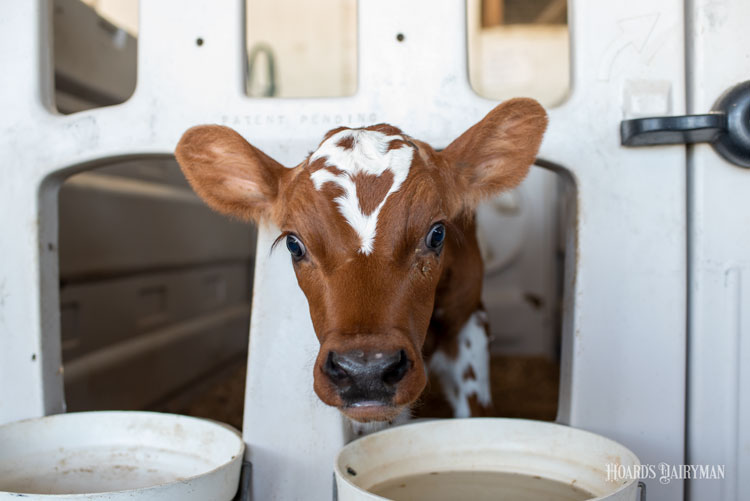
“Calves are an investment in your future herd and profitability of your farm,” said Margaret Quaassdorff, dairy management specialist with Cornell Cooperative Extension.
Early care is particularly important, since calves and replacement heifers account for 15% to 20% of milk production costs, which ranks third right after feed and labor costs, Quaassdorff reported in “Critical Calf Care,” hosted by Cornell Cooperative Extension.
“We have to measure what we want to manage. But fortunately, there are a lot of factors in our control, and these are things we can keep accurate records on, apply economics to, and make decisions that are best for our calves and businesses,” said Quaassdorff.
Record keeping, as well as later reviewing those records, allows farmers to use data to make economic decisions. Keep records for:
- Treatments
- Food and water intake, including the date feeding of milk is changed
- Growth, including birth weight and weaning weight to calculate growth
- Vaccinations
- Weaning
- Death and necropsy
“Most importantly . . . you don’t need to reinvent the wheel and come up with these record keeping systems on your own. There are lots of software options available for you, or you can utilize some sort of Excel or paper version, or just pull from the internet and utilize the resources there,” said Alycia Drwencke, a dairy management specialist with Cornell.
Economics play a large part in calf care, as illness has an impact on future performance. For instance, bovine respiratory disease, with pneumonia being the most common, typically occurs in the first 30 days.
“Calves that experienced pneumonia or bovine respiratory disease before 70 days weighed 12.7 pounds less than healthy calves at 90 days,” Quaassdorff said. “These calves are also 2.8 times more likely to be culled before first calving, and 1.5 times more likely to be culled before 150 days in milk. When they were in the milking string, calves that had experienced a pneumonia event made 649 pounds less milk during that first lactation.”
In addition, scouring calves treated with antibiotics gave 1,086 pounds less during their first lactation than those not treated.
“This can have a huge impact both on your calves’ health and your bottom line,” Quaassdorff said.
Overall, records can be a helpful management decision tool and also help give a clearer picture of what occurs on your farm.
“In addition, you can combine growth and health records with financial records to determine profitability and the economic efficiency of your calf program,” Quaassdorff said.








